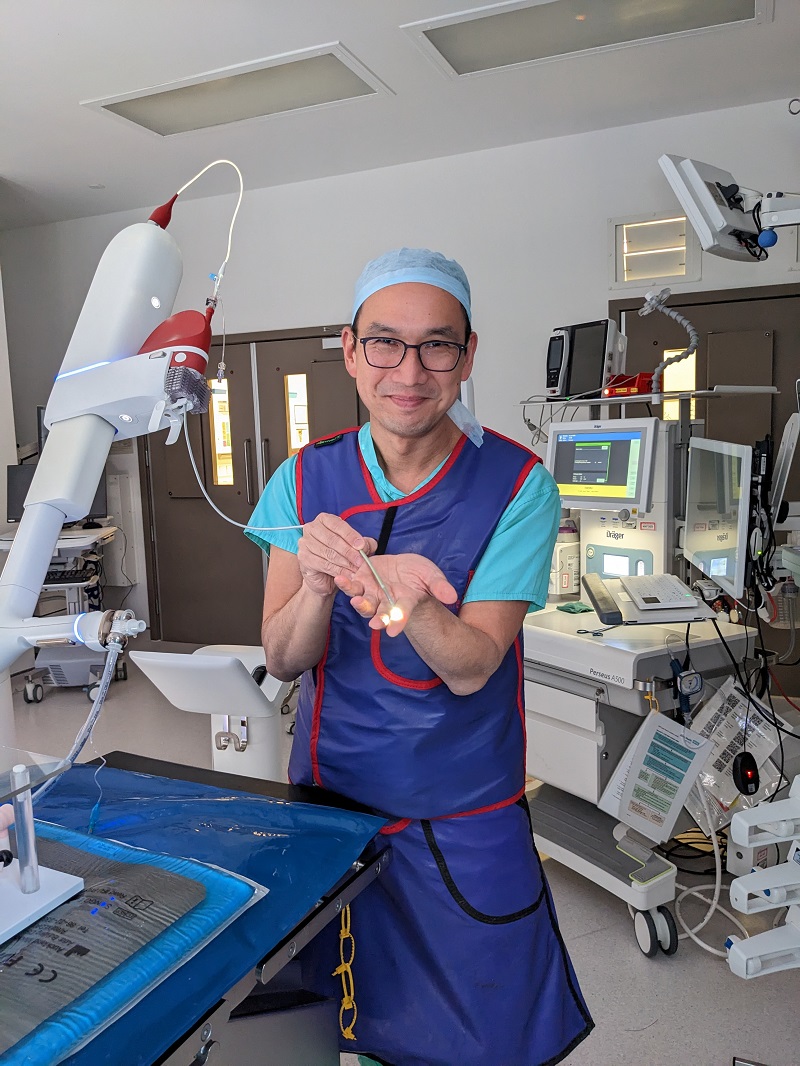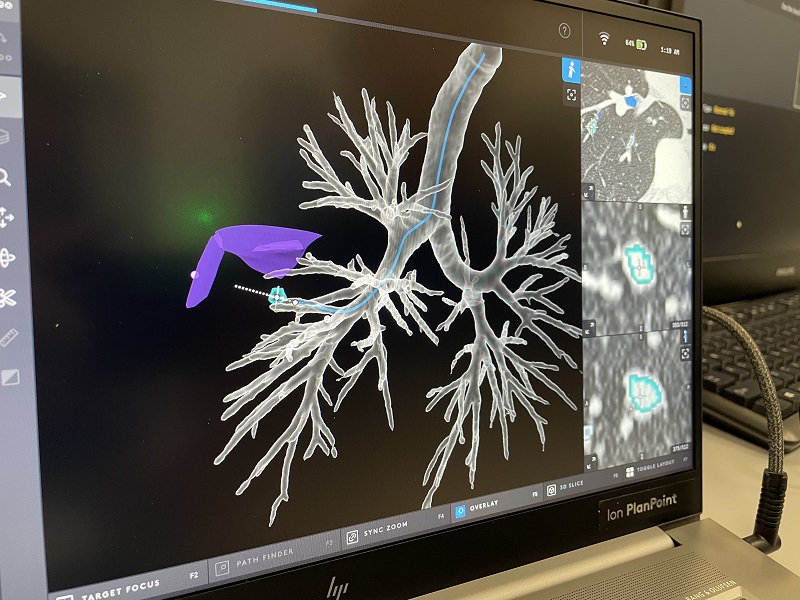A robotic-assisted bronchoscopy system that could help transform early diagnosis of suspected lung cancer in patients is being used in the UK for the first time as part of an NHS clinical study.
The Ion Endoluminal System (Ion) from Intuitive could help improve precision when taking tissue biopsies of lung nodules, meaning patients could get diagnoses much faster.
Ion uses unique shape-sensing technology and robotic assistance to enable clinicians to access deep, hard-to-reach areas of the lung and remove tissue for biopsy with greater precision and accuracy.
And its minimally-invasive approach means there may be less risk for patients than some existing biopsy techniques.
Now, for the first time in the UK, NHS clinicians at the Royal Brompton Hospital and St Bartholomew’s Hospital are participating in a clinical study to determine how Ion could best benefit patients and the NHS.
Each site will recruit approximately 50 patients with small lung nodules located in areas that are challenging to reach via traditional bronchoscopy.
Charlie Dean, senior vice president and general manager of endoluminal at Intuitive said: “We’re delighted to be working with clinicians in the UK to demonstrate the value that Ion could bring to the overall lung cancer patient pathway.
“The healthcare system in the UK is a hub of innovation and Ion’s entry here will be an important first step to wider patient access in Europe.
“With plans underway for the UK’s first targeted national lung cancer screening programme, improving the early diagnosis of cancers is rightly a top priority and we hope that our Ion platform can play a role in delivering the ambitions set out when it comes to earlier diagnosis and better outcomes for patients in the UK and beyond.”
Lung cancer is the most-common cause of cancer death in the UK and more than two thirds of cases are diagnosed at a late stage of progression.
Due to the current challenges of removing tissue for biopsy of early-stage nodules in hard-to-reach areas, some patients with suspected lung cancer may undergo long periods of ‘watchful waiting,’ while their nodule is monitored, but not definitively diagnosed by biopsy, causing related anxiety and delaying access to earlier treatment options.
Kelvin Lau, a consultant thoracic surgeon for St Bartholomew’s Hospital, said: “The UK is leading the world in rolling out a national lung cancer screening programme.
“However, only some of the lung nodules identified during screening are cancerous and need treatment.
Kelvin Lau, a consultant thoracic surgeon at St Bartholomew's Hospital, said current biospy techniques carry risk and are not always accurate, meaning patients wait longer for a diagnosis
“Current biopsy techniques carry risk and are not always accurate, and many patients end up waiting for a repeat scan.
“The uncertainty of the wait causes anxiety and could allow a cancer to grow and spread.
“With this shape-sensing robotic technology, I have the precision and stability to lock onto a very-small lung nodule and obtain an accurate biopsy quickly and safely.
“This could transform early diagnosis and treatment, reduce the need for repeat scans, and treat lung cancer earlier.”
Professor Pallav Shah, a consultant respiratory physician based at Royal Brompton Hospital, added: “The expanding national lung cancer screening programme in England will increase the number of suspicious nodules detected on CT scans at an earlier stage, which will need to be biopsied to determine a diagnosis.
“We know that an earlier diagnosis of lung cancer leads to significantly improved outcomes for our patients and when we see patients with cancerous lung nodules of more than 30mm, their five-year survival rate is around 68%. But, if we are able to detect these nodules at a smaller size, when they are less than 10mm in size, we are looking at a 92% survival rate.
“This new technology is transformative for us as clinicians because it allows us to access and biopsy nodules of less than 10mm in size in difficult to reach areas of the lungs.
“The chance of a cure for these patients is therefore vastly improved.”
There are over 400 Ion systems installed in US hospitals and Intuitive continues to explore its applications in other countries including in the UK and across Europe and beyond.
Ion's minimally-invasive approach carries less risk for patients
